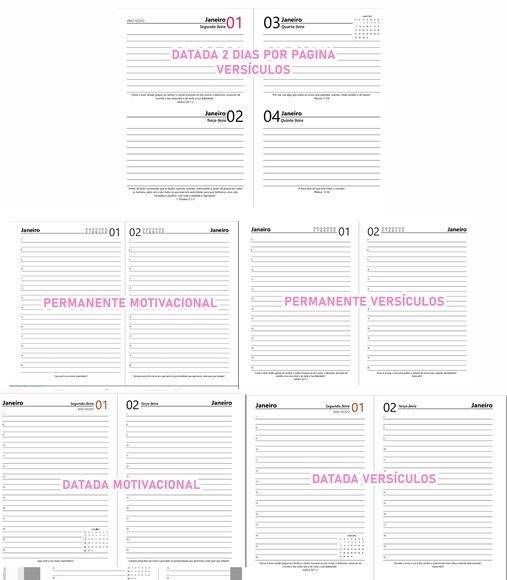flange binding pdf
Flange Binding PDF: A Comprehensive Guide
Discover the art of flange binding with our comprehensive guide! This resource provides in-depth instructions‚ tips‚ and techniques for achieving professional-looking results. Learn everything from basic steps to advanced tricks!
Welcome to the world of flange binding‚ a decorative and professional-looking quilt binding technique that adds a unique touch to your finished projects. This method creates a subtle “piping” effect along the edge of your quilt‚ giving it a distinctive and polished appearance. Unlike traditional binding‚ flange binding uses contrasting fabrics to highlight the flange‚ making it a standout feature of your quilt.
In this section‚ we’ll delve into the basics of flange binding‚ exploring its origins‚ variations‚ and why it’s a favorite among quilters. Whether you’re a seasoned quilter or just starting‚ understanding the fundamentals of flange binding will open up new creative possibilities for your projects. Prepare to enhance your quilting skills and add a touch of elegance to your creations with this comprehensive introduction to flange binding.
We’ll cover the essential concepts and benefits‚ setting the stage for a step-by-step tutorial that will guide you through the process. Get ready to elevate your quilt binding game!
What is Flange Binding?
Flange binding‚ at its core‚ is a quilt binding technique designed to create a distinct‚ narrow border that appears as a raised “flange” along the edge of your quilt. This effect is achieved by using two layers of binding fabric‚ where one layer extends slightly beyond the other‚ creating a visible ridge. This ridge‚ or flange‚ adds a pop of color and dimension‚ enhancing the overall aesthetic appeal of the quilt.
Unlike traditional binding methods where the fabric is simply folded over the edge‚ flange binding involves precise measurements and careful stitching to ensure the flange is consistent and visually appealing. The beauty of flange binding lies in its versatility; it can be adapted to various quilt styles and fabric combinations‚ allowing you to customize the look to match your unique vision.
It’s a fantastic way to frame your quilt and highlight the artistry within. By understanding the mechanics of flange binding‚ you can achieve professional-quality results that elevate your quilting projects.
Benefits of Using Flange Binding
Flange binding offers several advantages that make it a popular choice among quilters. Firstly‚ it adds a unique decorative element to your quilt. The subtle flange creates a visually appealing border that enhances the overall design. This technique allows you to introduce an extra color or pattern‚ providing a striking contrast or a harmonious blend with the quilt’s existing palette.
Secondly‚ flange binding offers a clean and professional finish. The precise stitching and neatly defined flange create a polished look that elevates the quilt’s perceived quality. It’s an excellent way to showcase your attention to detail and craftsmanship.
Thirdly‚ flange binding can be more forgiving than traditional binding methods. The extra layer of fabric provides additional reinforcement to the quilt edges‚ making it more durable and resistant to wear and tear. This makes it an ideal choice for quilts that will be used frequently.
Finally‚ mastering flange binding expands your quilting skillset‚ opening doors to more creative possibilities.

Materials and Tools Needed
Prepare for flange binding success! Gather essential fabrics‚ reliable sewing tools‚ and optional precision aids. These materials will ensure a smooth‚ accurate‚ and enjoyable flange binding experience‚ leading to beautiful results.
Fabric Requirements for Flange Binding
Selecting the right fabric is crucial for a successful flange binding project. The amount of fabric you’ll need depends on the perimeter of your quilt or project. It’s always a good idea to measure the quilt’s edges accurately before cutting any fabric. Add approximately 20 inches to your measurement to account for corners and joining strips.
For the binding strips‚ consider using cotton fabric for its durability and ease of handling. Woven fabric works best. You will need to cut strips of fabric that are 1 inch wide. The length of the fabric strips depends on the size of the project. For a flange binding‚ you’ll need enough strips to equal or surpass this number. Precut jelly rolls are not recommended. It is important to fold them in half and press. Remember that the quality of the fabric influences the final appearance of the binding.
Essential Sewing Tools
To embark on your flange binding journey‚ assembling the right sewing tools is essential. A reliable sewing machine is paramount‚ ensuring consistent stitch quality and efficient binding. A rotary cutter‚ mat‚ and ruler will assist in achieving precise and accurate fabric cuts‚ crucial for professional results. Sharp scissors or thread snips are indispensable for trimming threads and cleaning up edges.

Pins are necessary for securing the binding strips to the quilt‚ keeping everything in place during the sewing process. A seam ripper is a must-have for correcting any mistakes that may arise. An iron and ironing board will help you press the strips. In addition to a walking foot‚ consider using a quarter-inch foot; Finally‚ hand-sewing needles and thread matching your fabric will be needed.

Optional Tools for Precision
While basic sewing tools are sufficient for flange binding‚ certain optional tools can significantly enhance precision and streamline the process. A bias tape maker can be invaluable for creating consistent and evenly folded binding strips‚ particularly when working with curved edges; A Hera marker‚ which creases fabric without cutting‚ aids in achieving crisp folds and mitered corners.
For maintaining uniform seam allowances‚ a seam gauge is a useful addition to your toolkit. To ensure accurate measurements‚ especially when dealing with larger projects‚ a long quilting ruler or a laser level can prove beneficial. Fabric clips can be employed as an alternative to pins‚ minimizing distortion and preventing snags‚ particularly with delicate fabrics. Finally‚ a stiletto or point turner assists in manipulating fabric and creating sharp corners‚ leading to a polished final product.

Step-by-Step Flange Binding Tutorial
Follow our easy step-by-step tutorial to master flange binding! Learn essential techniques for preparing strips‚ attaching binding‚ creating corners‚ and finishing edges for beautiful‚ professional results every time.
Preparing the Binding Strips
The initial phase in flange binding involves meticulous preparation of the binding strips. Accurate cutting and joining are pivotal for achieving a seamless and professional finish. Begin by calculating the perimeter of your quilt and adding an extra 20 inches to accommodate corners and joining. Next‚ determine the desired width of your flange binding; typically‚ strips ranging from 1 to 2 inches are preferred.
Cut the fabric into the determined width‚ utilizing either a rotary cutter or scissors. For longer lengths‚ consider using fabric strips cut from the width of the fabric (WOF). To ensure a continuous binding strip‚ join the smaller strips together using a diagonal seam‚ pressing the seams open to minimize bulk. Precision in this stage is paramount‚ as inconsistencies in width or poorly joined seams can affect the overall appearance and durability of the finished flange binding. Taking the time to meticulously prepare your binding strips guarantees a smoother and more professional binding process.
Cutting the Binding Strips
Accurately cutting binding strips is essential for a clean and professional flange binding. Begin by determining the width of your strips; a common starting point is 1-inch wide strips‚ but adjust this based on your desired flange size; Use a rotary cutter‚ a quilting ruler‚ and a cutting mat to ensure precise‚ straight cuts. For longer binding strips‚ cut along the width of the fabric (WOF) to minimize the number of seams needed.
When cutting‚ maintain consistent pressure on the rotary cutter and ruler to prevent wobbling or uneven edges. If you’re using patterned fabric‚ consider how the pattern will align along the binding. After cutting‚ stack the strips and double-check their width to ensure uniformity. Consistent width is crucial for a smooth‚ even flange. Remember‚ accurate cutting at this stage saves time and frustration later in the binding process. A little extra care here ensures a professional-looking finish to your quilt.
Joining Binding Strips Together

After cutting your binding strips‚ you’ll likely need to join them to create one continuous length long enough to go around your quilt. The most common method is the diagonal seam. Place two strips right sides together‚ perpendicular to each other‚ forming a 90-degree angle. Draw a diagonal line from one corner to the opposite corner. Sew along this line. Trim the excess fabric‚ leaving a 1/4-inch seam allowance‚ and press the seam open to reduce bulk.
This diagonal seam distributes the bulk and prevents a thick spot in your binding. Repeat this process until all strips are joined. Ensure that all seams are pressed open for a smooth‚ professional finish. As you join‚ consider the fabric pattern to create a visually appealing flow. Taking the time to carefully join your binding strips is essential for a seamless and beautiful flange binding. Remember to check the overall length against your quilt’s perimeter‚ adding a few extra inches for ease of handling.
Attaching the Binding to the Quilt
Now that your binding strip is prepared‚ it’s time to attach it to your quilt. Start by aligning the raw edge of the binding with the raw edge of your quilt top. Leave a tail of about 8-10 inches unsewn at the beginning; this will be used to join the ends later.
Using a walking foot on your sewing machine is highly recommended for even fabric feed. Sew around the quilt with a consistent seam allowance‚ typically 1/4 inch‚ pivoting at each corner. When you approach the starting point‚ stop sewing about 8-10 inches before the beginning of your seam‚ leaving another tail. It’s crucial to maintain a consistent seam allowance for a professional finish. Backstitch at the beginning and end of your stitching to secure the binding. Take your time‚ ensuring the binding remains aligned with the quilt edge throughout the process. This step forms the foundation for your beautiful flange!
Sewing the First Side
With the binding pinned or clipped in place‚ it’s time to sew the first side. Begin at least several inches from a corner to avoid bulk. Use a consistent seam allowance‚ typically 1/4 inch‚ to ensure a neat and even flange. A walking foot can be incredibly helpful in preventing the fabric from shifting‚ especially when working with thicker quilts.
As you sew‚ maintain a steady pace and keep the raw edges aligned. Backstitch at the beginning and end of your seam to secure the stitches. Pay close attention to the corners‚ stopping the seam allowance distance from the corner. Reinforce this corner with a backstitch to prevent unraveling when you miter the corner. This initial seam is crucial for setting the foundation of your flange binding.
Creating Mitered Corners
Mitered corners give your flange binding a clean‚ professional finish. When you reach a corner‚ stop sewing the seam allowance distance from the edge of the quilt. Fold the binding away from the quilt at a 45-degree angle‚ creating a diagonal fold; Then‚ fold the binding back onto itself‚ aligning the raw edge with the next side of the quilt.

Pin or clip the mitered corner in place‚ ensuring the folds are crisp and even. Start sewing from the edge of the quilt‚ catching all layers of the binding. Maintaining a consistent seam allowance is key to achieving uniform corners. Take your time and carefully align the fabric to create a sharp‚ clean miter. These corners require precision‚ but the result is a beautifully finished quilt.
Finishing the Binding
Once you’ve sewn all the way around your quilt‚ carefully trim any excess binding fabric‚ leaving about an inch or two to work with. To create a seamless finish‚ fold one end of the binding under by about 1/2 inch. Overlap the other end of the binding over the folded end‚ encasing it neatly.
Pin or clip this overlap in place‚ ensuring a smooth‚ even join. Sew the final section of the binding‚ securing the overlap. Trim any remaining excess fabric‚ creating a clean edge. Your quilt binding is almost complete! The next step involves turning and securing the binding to the back of the quilt‚ either by hand or machine.
Turning and Securing the Binding
Now comes the pivotal step: turning the binding to the back of your quilt. Gently fold the binding over the raw edge to the back‚ ensuring the flange (the accent strip) remains visible on the front. Press the folded edge to create a crisp‚ clean line. Mitering the corners at this stage is crucial for a professional look.
As you turn the binding‚ use pins or clips to secure it in place‚ maintaining a consistent width. The goal is to create a smooth‚ even border on the back of the quilt. Once pinned‚ you’re ready to secure the binding with your preferred method‚ either by hand stitching or machine stitching.
Hand Stitching or Machine Stitching the Binding
The final step in flange binding involves securing the folded edge on the back of your quilt. You have two primary options: hand stitching for an invisible finish or machine stitching for speed and durability. Hand stitching‚ often using a blind stitch‚ creates a nearly seamless appearance‚ ideal for heirloom-quality quilts.
Machine stitching‚ on the other hand‚ offers a quicker alternative. Choose a coordinating thread and a stitch that blends well with your backing fabric. A straight stitch or a decorative stitch can both be effective. Maintain a consistent seam allowance to ensure a uniform look. Backstitch at the beginning and end of your stitching line to secure the threads.

Alternative Methods for Flange Binding
Explore different ways to achieve the flange binding effect! Discover techniques like using two separate strips or a single strip‚ each offering unique advantages and visual appeal for your quilting projects.
Two Separate Strips Method
The Two Separate Strips method offers a precise way to create a distinct flange. Begin by cutting two sets of strips‚ one slightly wider than the other. The wider strip will form the main binding‚ while the narrower strip creates the flange. Attach the wider strip to the quilt’s edge with a standard seam allowance.
Next‚ press the binding away from the quilt. Position the narrower strip along the edge of the binding‚ ensuring a small portion extends beyond the seam. Stitch this strip in place‚ creating the visible flange. This method allows for contrasting fabrics and precise control over the flange width. It’s ideal for intricate quilt designs where accuracy is paramount‚ giving a clean and professional finish.
Mastering this technique unlocks creative possibilities‚ adding a unique touch to your quilting projects. This approach provides enhanced stability and a sophisticated‚ custom-made appearance. Experiment with colors and textures to personalize your flange binding!
Single Strip Method
The Single Strip Method offers a streamlined approach to achieving a flanged edge. This technique involves using one continuous strip of fabric‚ carefully folded and pressed to create both the binding and the flange simultaneously. Cut a strip of fabric wider than typically used for standard binding‚ accounting for both the binding width and the desired flange width.
Fold and press the strip lengthwise‚ creating a double-fold binding. Position the folded edge along the quilt’s edge‚ leaving a portion extending beyond the seam allowance to form the flange. Stitch through all layers‚ securing the binding to the quilt. This method is quicker than using two separate strips‚ ideal for projects where efficiency is crucial.
It results in a clean‚ uniform flange with minimal bulk. While it may offer slightly less control over the flange width compared to the two-strip method‚ the Single Strip Method remains a favored choice for its simplicity and speed. Embrace this technique for a fast and beautiful finish!

Advanced Tips and Tricks
Elevate your flange binding skills with these advanced tips and tricks! Discover techniques for perfect corners‚ troubleshooting common issues‚ and using die cutters. Master the art of professional-looking flange binding today.
Achieving Perfect Corners
Creating crisp‚ clean corners is crucial for a professional flange binding finish. One common method involves precise mitering‚ ensuring that your corner seams align perfectly. Start by accurately measuring and marking your corner points. Folding the binding fabric at a precise 45-degree angle‚ as demonstrated in several tutorials‚ is essential. Press the fold firmly to create a sharp crease‚ guiding your subsequent stitching.
Consider using a specialized cornering tool or template for consistent accuracy. When stitching around the corner‚ slow down and pivot carefully at the marked point. Backstitching at the pivot provides added security. After turning the corner‚ smooth out the fabric and continue stitching along the next edge. The key is practice and patience; don’t hesitate to unpick and redo if needed.
Experiment with different folding techniques to find what works best for your fabric thickness and personal preference. Remember that a well-executed mitered corner enhances the overall aesthetic appeal of your project.
Troubleshooting Common Issues
Even with careful preparation‚ flange binding can present challenges. A frequent problem is puckering along the edges‚ often caused by uneven fabric distribution or inconsistent seam allowances. To remedy this‚ ensure your binding strips are accurately cut and pressed. When attaching the binding‚ maintain a consistent seam allowance‚ using a walking foot if necessary to feed the fabric evenly. Another issue is bulky corners; trim excess fabric within the mitered corners to reduce bulk before turning the binding.

If the flange is too wide or too narrow‚ double-check your initial measurements and adjust accordingly. Ripples in the binding can occur if the binding is stretched during application; avoid pulling the fabric taut. Sometimes‚ the binding doesn’t lay flat; steam-pressing can help coax it into place. Remember‚ patience is key. Unpicking and redoing sections is often necessary to achieve a flawless finish.
Consult online tutorials and videos for visual guidance on specific troubleshooting scenarios. Don’t be afraid to experiment and learn from your mistakes.
Flange Binding with a Die Cutter
Using a die cutter for flange binding streamlines the process‚ ensuring accuracy and saving time. Specialized flange binding dies‚ like the GO! Flange Binding Die‚ precisely cut the necessary strips for creating a consistent flange. The die eliminates manual cutting errors‚ leading to professional-looking results. To begin‚ select your fabric and layer it according to the die manufacturer’s instructions.
Pass the die through your die-cutting machine to produce perfectly sized binding strips. These strips are ready for joining and attaching to your quilt. The consistent width of the die-cut strips helps maintain a uniform flange around the quilt’s perimeter. This method is particularly beneficial for quilters who value precision and efficiency.
Die cutters simplify intricate tasks‚ making flange binding accessible to quilters of all skill levels. Explore online resources and video tutorials to maximize the benefits of using a die cutter for your next flange binding project. Embrace the technology for enhanced accuracy.













